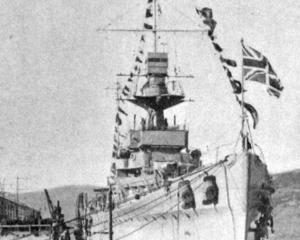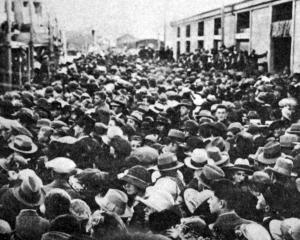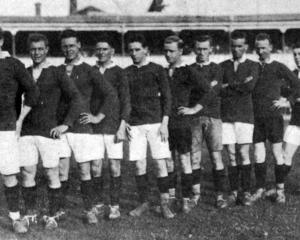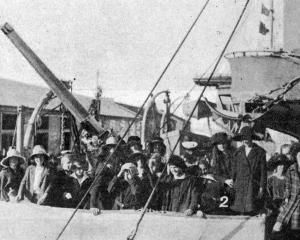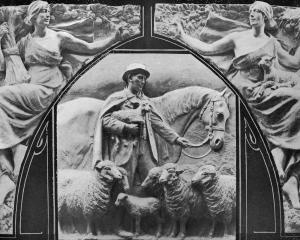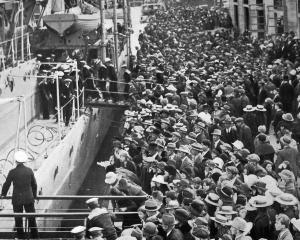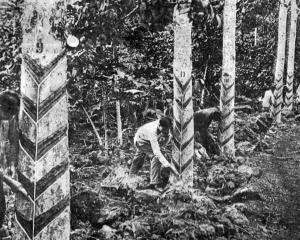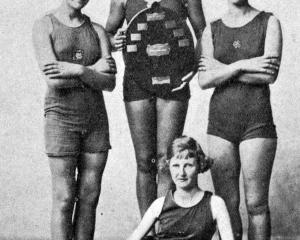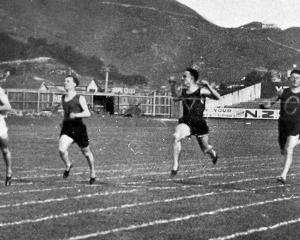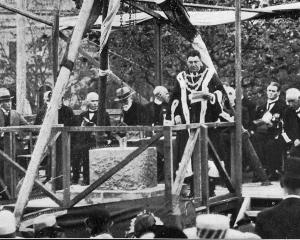It is beyond the rugged gorge country, but the land is broken and rocky.
A fortnight ago it was the stronghold of nothing more harmful than rabbits, but about a week ago bands of khaki-clad advance parties arrived, and in an incredibly short space of time the organisation, working with despatch, had built up a town in the wilderness, so that when an Otago Daily Times reporter arrived at the camp, he found an orderly city of tents.
The disposition of the various centres of control has been admirably arranged in the hollow at the bottom of the cup formed by the surrounding hills.
The camp makes a semi-circle, of which the railway forms the base, and at the top are the divisional headquarters - the headquarters of the entire camp. Colonel Bauchop, C. M. G., is in charge, with Major J. D. Grant for his second in command.
Along the base of the semi-circle are the regiments. First, there is the mounted brigade, in charge of Col. J. C. Nicholls, V. D., A. D. C., the brigadier, with Captain A. Grant as brigade major.
To-night there were approximately 40 officers and 700 men in camp, and it is expected that the total strength will be about 800.
There are three regiments - the 5th, 7th, and 12th - in the brigade, which comprises one big section of the division.
The other large sections will be composed of the Otago Infantry Brigade, under Colonel Smith, V. D. It consists of the 4th, 8th, 10th, and 14th Regiments.
The 4th will not arrive till April 24, and to-night the total number in camp was about 1500.
In addition there are the No. 2 Field Ambulance, the No. 7 Mounted Ambulance, the No. 2 Company Field Engineers, the Divisional Signalling Company, the Field Artillery Brigade, and the Coast Defence Forces. A large number of men will arrive on April 24.
- An electrical invention, which, it is claimed, will do away with waiters in restaurants and hotels, is being experimented with in Paris (states a London paper). Each table in the restaurant is to be fitted with a frame bearing the menu and a series of electrical ''press'' buttons corresponding with each item in the menu.
The customer sits down before the already laid table, with a pile of plates and silver on one side, chooses the dish which he prefers, and presses the corresponding buttons in turn.
In the kitchen of the restaurant the number of the table and the number of the course required are signalled on a screen to the chefs and their assistants, and in a few seconds a steaming hot dish appears in a little lift at the side of the diner's table.
The customer helps himself, presses a button and the dish disappears as silently as it came, leaving at the side of the plate a little aluminium ticket indicating the sum to be paid.
- We learn on good authority that tenders for the late Mr A. C. Iversen's Varde Estate and orchards will shortly be invited in order to wind up the trust.
This block of 600 acres, if cut up into convenient sized fruit farms, should go a long way towards increasing the prosperity of Alexandra, it being only three miles distant.
It is estimated that 25 to 30 families could make a splendid living on such land, as the quality of the soil and its exceptional situation make it ideal for fruit raising.
Export apple growing promises to be an industry second only to our dairy and frozen meat industries.
- ODT, 18.4.1914.

